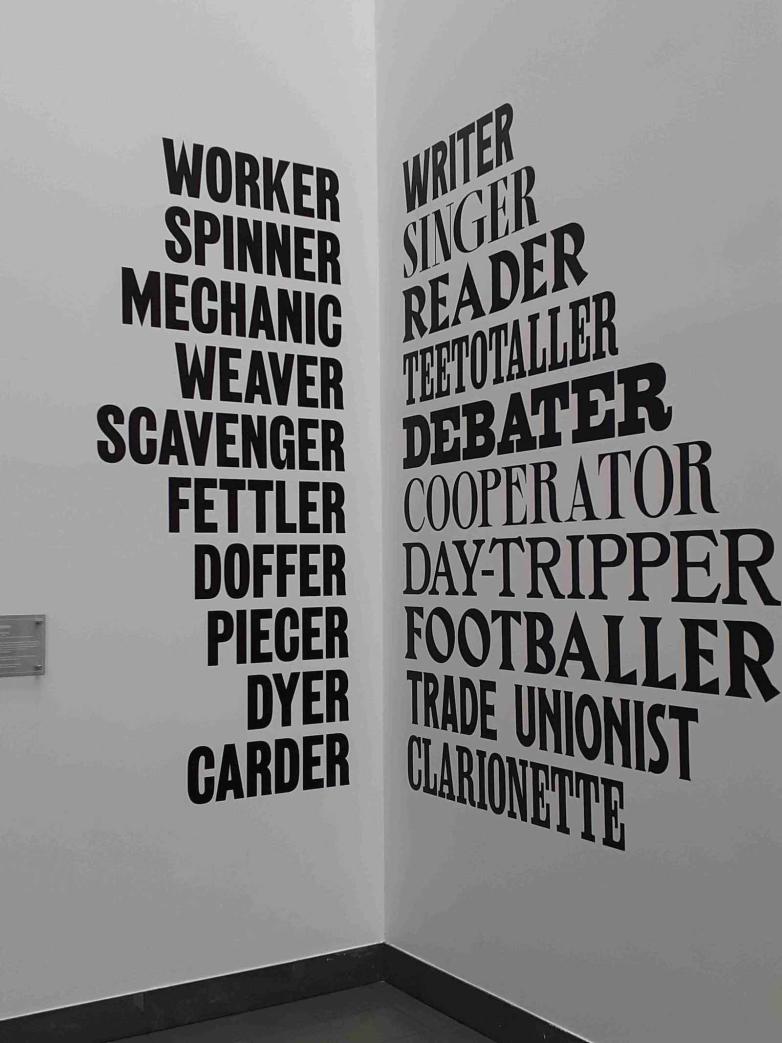Workers’ Playtime: Community and Culture in Industrial Lancashire

From the Workers Playtime exhibition
Finally clocking off for the day, leaving the dark satanic cotton mills of Manchester and Lancashire behind for a few precious hours, what were the options available for workers in Victorian times and the early years of the twentieth century to lighten the gloom and grimness of the daily grind?
Quite rightly, we usually focus our attention on the appalling conditions of the working life for mill workers and the alienation they experienced. The premise of the Workers' Playtime exhibition at the John Rylands Library (Deansgate, Manchester - running through September 9, 2023) is that it is worth our while spending time considering and recognising the determination and ingenuity of working people to seize opportunities to engage in communal and cultural activities, to shed some light and hope for a brighter future.
The exhibition itself may be confined to a rather small, cramped and very darkly lit room, but it does enable us to be beamed straight back into the nineteenth century thanks to its wonderful display of historical documents. Once transported to the 19th and early 20th centuries in this tiny time machine, you can delve into the many fine examples provided of the extent of the playground. There is evidence of literary groups meeting in pubs, workers’ newspapers, poetry, drama performances, sporting clubs, music making, correspondence courses, trips to the seaside and so much more. The workers were organising themselves, socialising, networking, all in the pursuit of a more fulfilling life, which of course also included political engagement.
As anyone reading this review knows: culture matters! The good life for socialists is not just limited to achieving better working conditions, but needs to go hand-in-hand with greater leisure opportunities for education, artistic expression and fun. William Morris believed that 'fellowship is life' and a precursor of what a socialist society would be like, and it is sometimes said that Marx beavering away all hours in the British Library would have been happier spending more time reading his beloved Balzac.
This exhibition summarises the changes, after a great deal of campaigning by trade unions, religious groups and enlightened employers, which provided more scope for leisure, especially more time for women and men to devote to running their own affairs. For example, the Factory Act of 1833 and the Education Act of 1870.
At the heart of the exhibition then are the various historical documents. This is a small-scale exhibition covering a large subject across a wide timeframe. The selected items though do represent key areas of cultural and communal activity in the Cottonopolis region. They capture the range and variety of cultural interests that were evolving. The choice is stimulating, encouraging us to look more closely into a particular aspect, perhaps at home in our leisure and with all the aid of 21st century technology. The exhibits are all from the Rylands collection and it would be interesting to find out what other, similar treasures they hold.
You can read the front page of The Clarion, that entertaining socialist newspaper begun here in Manchester which built up a huge circulation, 80,000 at its peak. Or check out The Cotton Factory Times aimed initially at Ashton-under-Lyne mill workers. Back in the day, you might have been one of 40 or 50,000 also browsing it.
There’s The Labour Church Hymn Book and searching for further information afterwards, you find that it was founded by John Trevor, a Christian Socialist. The church provided a shelter for the homeless on Deansgate.
There are photos of sports clubs, trips to the seaside. Humour is to be had in the dialect poets and the spoof rules of The Moss Side Debating Society. Filling yourself with ale to deaden the misery of your work and surroundings was understandable, but was it fulfilling? The influence of the temperance movement is highlighted with a map of Manchester showing the proliferation of pubs. So many of these different items raise issues which merit their own in-depth study and display.
Here’s a challenging statement in the section on the Co-op: ‘The Co-operative Movement is the great working-class success story of the 19th century.’ As significant as Chartism, or more? This claim is backed up by the display material and background facts, for example, by 1890 it had 721,310 members, and one person one vote was not restricted to male membership. Its reach was extensive, providing safe and affordable food, but also educational and cultural opportunities.
The Workers’ Playtime exhibition certainly is ambitious, whetting the appetite for more. At reception staff spoke about the plans for the Library to have improved exhibition facilities and it must be said that this is a small taster type of exhibition. Anyone visiting Manchester from afar could also visit The People’s History Museum, a short walk away, which would perfectly complement what’s on offer here.
I benefitted and thoroughly enjoyed the experience of accompanying one of the three curators of the exhibition, along with many others, on a free tour. The tour was led by Michael Sanders, Professor of 19th Century Literature and Culture at the University of Manchester, and a contributor to our Culture Matters website. ‘He really brought it all to life’ was one comment I heard afterwards. The next tour he will be conducting will be on May 4th at 2pm.
This article and image by Dermot Foster first appeared at Culture Matters and is reproduced here with their full permission and kind thanks.















